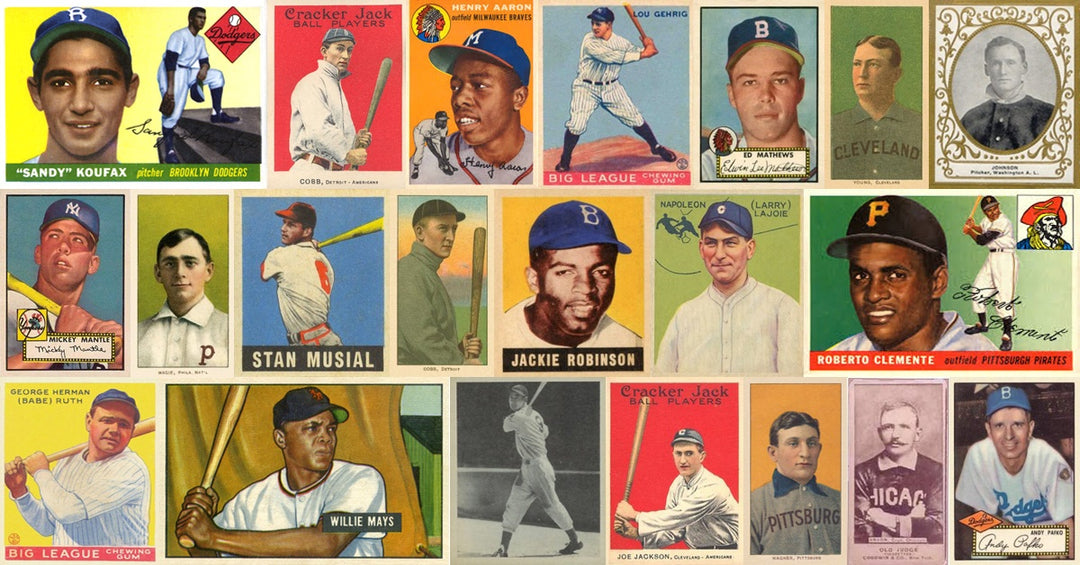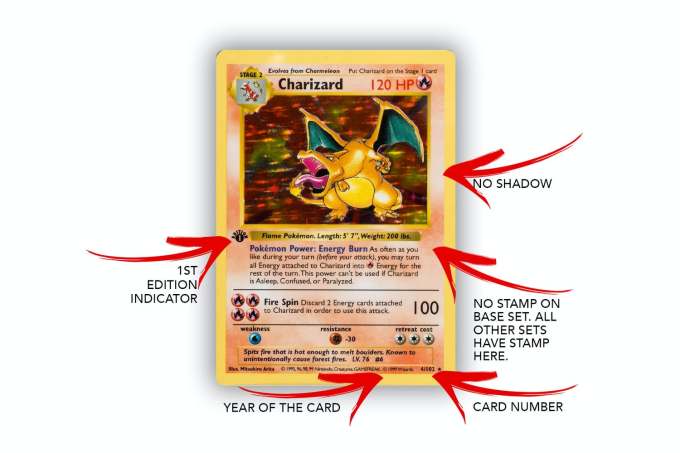What Makes Trading Cards So Valuable?

Trading cards have become more than just a hobby for many people. In recent years, they have gained significant value in the market, with some cards fetching prices that would make your jaw drop. But what exactly makes these little pieces of cardboard so valuable?
Well, it all comes down to a few key factors. First and foremost, rarity plays a major role in determining a trading card’s value. Just like with any collector’s item, the scarcer an item is, the more valuable it becomes. This is especially true for trading cards that were produced in limited quantities or feature a specific player or event that holds historical significance.
Another factor that contributes to the value of trading cards is their condition. Just like with any collectible, the better the condition, the higher the price tag. Cards that are in mint condition, meaning they haven’t been damaged or show signs of wear and tear, are highly sought after by collectors. These cards are often graded by professional grading companies, further adding to their value.
But it’s not just rarity and condition that make trading cards valuable. Popularity and demand also play a crucial role. Cards featuring iconic athletes or popular characters from movies, TV shows, or video games tend to have a higher demand and, therefore, a higher value. Additionally, cards that hold sentimental value for collectors or have a nostalgic appeal can also fetch a premium price.
So, whether you have a prized collection gathering dust in your attic or you’re considering getting into the world of trading cards, understanding what makes them valuable is key. Keep an eye out for rarity, condition, popularity, and demand, and who knows, you might just stumble upon a card that could be worth a small fortune.

Understanding the Value of Trading Cards
Trading cards have become a phenomenon in the world of collectibles, with prices skyrocketing for rare and sought-after cards. From sports cards to Pokémon and Magic: The Gathering, these small pieces of cardboard hold immense value for collectors and enthusiasts. But what exactly makes trading cards so valuable? Let’s delve into the factors that contribute to their worth and why they continue to fascinate people around the globe.
The Rarity Factor
One of the primary drivers of trading card value is rarity. The scarcity of a particular card can greatly impact its price. Cards that were produced in limited quantities, such as special edition releases or promotional cards, tend to be more valuable. The rarer the card, the higher the demand from collectors who are looking to complete their sets or acquire unique pieces for their collections.
Additionally, cards featuring popular players or characters who have made significant contributions to their respective fields often command higher prices. For example, rookie cards of legendary athletes like Michael Jordan or iconic characters like Pikachu are highly sought after due to their limited availability and the enduring popularity of the individuals they represent.
Investment Potential
Trading cards have also gained attention as alternative investment assets. With the rise of platforms like eBay and dedicated trading card marketplaces, individuals have recognized the potential for substantial returns on their card investments. As a result, people are increasingly viewing trading cards as a viable asset class.
Similar to stocks or real estate, trading cards can appreciate in value over time. However, it’s important to note that investing in trading cards comes with risks and uncertainties. The market can fluctuate, and the value of a card is ultimately determined by supply and demand dynamics. Nevertheless, for those who have a keen eye for spotting undervalued cards or predicting market trends, trading cards can offer exciting investment opportunities.
The Nostalgia Factor
Trading cards often evoke a sense of nostalgia and sentimentality in collectors. Many individuals have fond memories of trading cards during their childhood, whether it was swapping Pokémon cards during recess or collecting their favorite sports stars’ cards. This emotional connection to trading cards drives the demand and fuels their value.
Furthermore, the sentimental aspect of trading cards extends beyond personal experiences. Cards featuring iconic moments in sports history or beloved characters from popular franchises tap into a collective nostalgia that resonates with a wide audience. Owning a piece of history or a beloved character can be an incredibly fulfilling experience, adding to the allure and value of trading cards.
The Role of Grading and Authentication
To ensure the authenticity and condition of trading cards, grading and authentication services have become integral to the market. Professional grading companies assess the quality and condition of a card, assigning it a grade that corresponds to its overall state. Cards that receive higher grades, indicating better condition, are generally more valuable.
Authentication guarantees that a card is genuine and not a counterfeit or reproduction. With the rise of counterfeit trading cards, authentication services provide peace of mind to collectors and ensure the integrity of the market. Cards accompanied by a reputable grading and authentication certification often command higher prices due to the increased confidence buyers have in their legitimacy.
The Future of Trading Card Value
As the world becomes increasingly digital, trading cards offer a tangible and collectible experience. The value of these physical items is likely to continue rising, especially for rare and iconic cards. The intersection of nostalgia, investment potential, and a dedicated collector community ensures that trading cards will remain a valuable and cherished asset for years to come.
Trading cards have come a long way since their inception and have transcended their original purpose as a simple pastime for children. Today, they represent a unique blend of history, art, and investment potential. Whether you’re a seasoned collector or a curious newcomer, trading cards offer a fascinating world to explore, filled with stories, excitement, and the thrill of finding that elusive card to complete your collection.
So, if you’re looking to dive into the world of trading cards and start building your own valuable collection, be sure to check out Vanity Slabs holders. They are the best in trading card protection, offering top-quality products to safeguard and showcase your prized cards. Visit their website at https://www.vanityslabs.com/ to explore their range of premium card holders and accessories. Happy collecting!
Key Takeaways: What Makes Trading Cards So Valuable?
- Trading cards gain value based on rarity and demand.
- Popular players and limited editions increase card value.
- Condition and authenticity impact a card’s worth.
- Historical significance and cultural appeal add value.
- Investors and collectors drive up prices in the market.
Frequently Asked Questions
1. What factors contribute to the value of trading cards?
There are several factors that contribute to the value of trading cards. One of the most important factors is rarity. Cards that are produced in limited quantities are often more valuable because they are harder to come by. Additionally, the condition of the card plays a significant role in determining its value. Cards that are in pristine condition, without any creases or damage, are highly sought after by collectors. The popularity of the franchise or player featured on the card can also impact its value. Cards associated with beloved characters or legendary athletes tend to command higher prices. Lastly, historical significance or special editions can further increase the value of trading cards.
It’s important to note that the value of trading cards can fluctuate over time. Market demand and trends can greatly influence prices. Collectors and investors should stay informed about current market conditions to make informed decisions about buying, selling, or holding onto their valuable trading cards.
2. How can the condition of a trading card affect its value?
The condition of a trading card is a crucial factor in determining its value. Collectors prefer cards that are in excellent condition, as these are considered more desirable and rare. Cards that have been well-preserved and show minimal signs of wear, such as creases, stains, or scratches, are highly sought after. These cards are often referred to as “gem mint” or “near mint” condition.
To maintain the condition of trading cards, collectors often use protective sleeves, top loaders, or even graded cases. Grading companies, such as PSA or Beckett, evaluate and assign a grade to cards based on their condition. Higher grades indicate better condition and can significantly increase the value of a card. Collectors should handle cards with care, avoiding touching the surfaces and storing them in a cool and dry environment to prevent damage and preserve their value.
3. Can trading cards from specific eras be more valuable?
Yes, trading cards from specific eras can be more valuable due to various reasons. Cards from vintage eras, such as the early 1900s to the 1960s, are often highly sought after by collectors. These cards hold historical significance and are relatively rare, as many have been lost or damaged over time.
Similarly, cards from the “rookie” years of iconic athletes or pivotal moments in a franchise’s history can also command higher prices. The scarcity and demand for these cards contribute to their increased value. On the other hand, newer cards may also hold value if they feature popular players or have unique attributes, such as autographs or game-worn memorabilia.
4. Are there any specific trading card brands or sets that are known for their value?
Yes, certain trading card brands or sets have gained a reputation for their value over the years. For example, the “T206” set produced in the early 1900s is highly regarded and includes the famous Honus Wagner card, which is considered one of the most valuable trading cards ever. Other notable sets include the 1952 Topps baseball set, which features the iconic Mickey Mantle rookie card, and the 1996 Pokémon Base Set, which launched the Pokémon card craze. These sets have become synonymous with collectability and have consistently held their value in the market.
However, it’s worth noting that the value of specific brands or sets can change over time. New releases and shifting trends in the market can affect the perceived value of trading cards. Collectors should always do their research and stay informed about current market conditions when investing in valuable trading card sets.
5. How can one determine the value of their trading cards?
Determining the value of trading cards can be a complex process. One way to get an estimate of their value is by researching recent sales of similar cards. Online marketplaces and auction sites often provide data on completed sales, allowing collectors to gauge the market value of their cards.
Consulting with professional grading companies, such as PSA or Beckett, can also provide a more accurate assessment of a card’s value. These companies evaluate the condition of the card and assign it a grade, which can greatly impact its worth. Additionally, seeking advice from experienced collectors or appraisers can help in determining the value of rare or unique trading cards. It’s important to remember that the value of trading cards is subject to change, so regularly staying updated on market trends is essential for accurate valuation.
Why Investing in Sports Cards Is Taking Off | Niche Markets | WSJ
Final Summary: What Makes Trading Cards So Valuable?
Trading cards have become more than just pieces of cardboard with pictures on them; they have transformed into highly valuable collectibles. So, what exactly makes these trading cards so valuable? Let’s delve into the reasons that have made them a hot commodity in the market.
One key factor driving the value of trading cards is their rarity. Limited production runs result in scarcity, and collectors are willing to pay a premium for cards that are hard to come by. Whether it’s a special edition card or one with a low print run, rarity adds to the allure and desirability of the trading card.
Additionally, the condition of a trading card plays a vital role in determining its value. Mint-condition cards, with no signs of wear, fetch higher prices as collectors strive to complete their collections with pristine cards. These cards are often graded by professional grading companies, further enhancing their value in the market.
Furthermore, the demand for certain trading cards drives up their value. Popularity can skyrocket due to factors such as player performance, historical significance, or cultural relevance. When a player achieves remarkable feats on the field, their trading cards become highly sought after by fans and collectors alike. This increased demand leads to higher prices for these coveted cards.
In conclusion, trading cards have become valuable due to their rarity, condition, and demand. Collectors are drawn to the thrill of owning cards that are scarce, in pristine condition, and connected to popular players or significant moments. As the trading card market continues to thrive, the value of these collectibles is set to soar. So, keep an eye out for that hidden gem in your collection – it could be worth more than you think!






